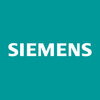Industrial Automation Engineer
10+ Industrial Automation Engineer Interview Questions and Answers
Asked in B&R Industrial Automation

Q. What are the speed-torque characteristics of servo motors?
Servo motors exhibit a unique speed-torque curve, balancing speed and torque for precise control in automation applications.
Servo motors provide high torque at low speeds, ideal for applications like robotics.
As speed increases, torque typically decreases, following a specific curve.
For example, a servo motor may deliver maximum torque at 0 RPM, but only a fraction of that at its rated speed.
The speed-torque characteristic is crucial for applications requiring precise positio...read more
Asked in B&R Industrial Automation

Q. What is the construction and working principle of servo motors?
Servo motors are electromechanical devices that provide precise control of angular position, velocity, and acceleration.
Construction includes a motor, feedback device (encoder), and controller.
Common types are DC servo motors and AC servo motors.
DC servo motors use a commutator and brushes for operation.
AC servo motors are typically more efficient and have higher torque.
Feedback devices like encoders provide real-time position data.
Used in robotics, CNC machinery, and conveyo...read more
Asked in B&R Industrial Automation

Q. What is the difference between source and sink wiring?
Source wiring provides power to devices, while sink wiring receives power from devices, affecting circuit design and functionality.
Source wiring supplies voltage to the load; for example, a switch providing power to a light.
Sink wiring connects the load to ground; for instance, a sensor that completes a circuit to activate an alarm.
In source wiring, the control device (like a PLC) sends power to the output device.
In sink wiring, the control device receives power from the outp...read more

Asked in Syrma SGS Technologies

Q. Where is the Philips product company located?
Philips product company is headquartered in Amsterdam, Netherlands.
Headquartered in Amsterdam, Netherlands
Has manufacturing facilities worldwide
Produces a wide range of products including healthcare, lighting, and consumer electronics
Asked in Nrp Consultants

Q. What is the difference between scan time and watch time in a PLC?
Scan time is the time taken by a PLC to execute its program, while watch time refers to the duration a variable is monitored.
Scan time is the total time for the PLC to read inputs, execute the program, and update outputs.
For example, if a PLC takes 10 ms to complete one cycle, its scan time is 10 ms.
Watch time is the duration for which a specific variable or condition is monitored for changes.
For instance, if a temperature sensor is monitored every 5 seconds, its watch time i...read more

Asked in DesignTech Systems

Q. Communication protocols and brief explanation of project
Communication protocols are essential for industrial automation engineers to ensure seamless data exchange between devices.
Industrial automation systems use various communication protocols such as Modbus, Profibus, and Ethernet/IP.
The choice of protocol depends on factors such as distance, speed, and type of data being transmitted.
Projects may involve integrating different devices with different protocols, requiring protocol converters or gateways.
Communication protocols also...read more
Industrial Automation Engineer Jobs



Asked in Nrp Consultants

Q. What are the parameters in VFD?
VFD parameters control motor speed, torque, and performance, optimizing energy use and process efficiency.
Frequency: Determines motor speed; e.g., 60 Hz for standard operation.
Voltage: Adjusts the voltage supplied to the motor; e.g., 230V or 460V.
Current Limit: Protects the motor from overheating; e.g., setting a max current of 10A.
Acceleration/Deceleration Time: Controls how quickly the motor speeds up or slows down; e.g., 5 seconds.
Torque Control: Manages the torque output;...read more
Asked in Nrp Consultants

Q. What is the difference between FC and FB blocks?
FC (Function Block) and FB (Function Block) differ in reusability and data handling in industrial automation programming.
FC (Function Call) is stateless, meaning it does not retain data between calls.
FB (Function Block) is stateful, allowing it to retain data across multiple calls.
FC is typically used for simple calculations or operations, while FB is used for complex processes requiring memory.
Example of FC: A function that calculates the sum of two numbers.
Example of FB: A ...read more
Share interview questions and help millions of jobseekers 🌟

Asked in Nrp Consultants

Q. Define absolute and incremental encoding.
Absolute encoding provides a unique position for each angle, while incremental encoding measures changes in position.
Absolute encoders provide a specific position value, e.g., 90 degrees.
Incremental encoders measure movement from a reference point, e.g., 10 degrees from the last position.
Absolute encoders use binary or gray code for position, while incremental encoders use pulses.
In robotics, absolute encoders help in knowing the exact position, while incremental encoders are...read more
Asked in Nrp Consultants

Q. Use of organisation blocks
Organization blocks in industrial automation help structure code for modularity, reusability, and easier maintenance.
Encapsulate functionality: Organization blocks allow grouping related functions, making code modular.
Reusability: Once created, organization blocks can be reused across different projects, saving time.
Easier maintenance: Changes in one block can be made without affecting the entire system, simplifying updates.
Example: A block for motor control can be reused in ...read more

Asked in Indo German Tool Room

Q. Future of electrical
The future of electrical engineering is focused on renewable energy, smart grids, automation, and IoT integration.
Renewable energy sources like solar and wind power are becoming more prevalent in electrical systems.
Smart grids are being developed to optimize energy distribution and consumption.
Automation technologies are being integrated into electrical systems for increased efficiency and reliability.
Internet of Things (IoT) devices are being used to monitor and control elec...read more
Interview Questions of Similar Designations
Interview Experiences of Popular Companies






Calculate your in-hand salary
Confused about how your in-hand salary is calculated? Enter your annual salary (CTC) and get your in-hand salary


Reviews
Interviews
Salaries
Users










